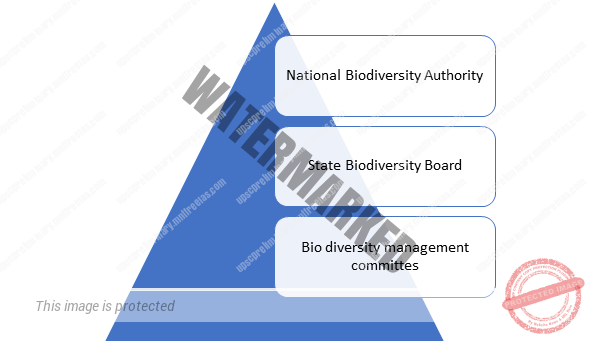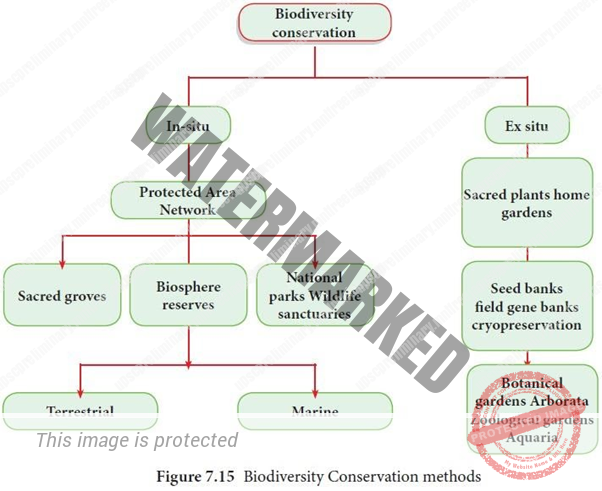- CONVENTION OF BIOLOGICAL DIVERSITY (CBD)
- CASE STUDY OF BIO PIRACY
- BIODIVERSITY CONSERVATION
- IN-SITU & EX-SITU CONSERVATION
- BIO PROSPECTING
UNIT 2 – BIODIVERSITY– PART 5
CONVENTION OF BIOLOGICAL DIVERSITY (CBD)
There had been no inter-governmental legislations or legal frameworks until 1992 Earth Summit in Rio de Jeneiro, Brazil when United Nations adopted Convention of Biological Diversity, CBD that ensures fair benefit sharing between all the parties involved with the bio prospecting. There were in total 196 countries and European Union (notable exception is USA) ratified the CBD.
The UN Convention on Biological Diversity (CBD) has existed since 1992 and meets every two years to discuss biodiversity conservation, sustainable use of biodiversity and sharing of genetic resources. As part of the CBD agreements, in 2010 the EU signed the Aichi targets, thereby agreeing to halt global biodiversity loss by 2020. However, WWF’s Living Planet Index, which tracks the state of the world’s biological diversity, has shown that these targets will not be met.
The convention also made agreements for technology transfer, impact assessment, technical and scientific corporation, education and public awareness and provision for financial resources.
The treaty was later modified to include transparent legal frameworks for equitable benefit sharing in the meeting held at Nagoya, Japan in 2010, a supplementary agreement commonly known as Nagoya Protocol.
The protocol entered into force in 2014 and had been ratified by 96 parties including European Union till date (exceptions include US, Canada and Russia). India enacted Biological Diversity Act in 2002 for giving effect to the provisions of the CBD.
In 2020, the CBD COP will be a pivotal meeting for biodiversity conservation, as a post-2020 Biodiversity Strategy will be agreed upon for the following decade. As a party to the CBD, the EU operates as one single bloc at the table, and so it is crucial that it shows strong leadership, commitments, and tangible targets to protect biodiversity.
Primary Authorities under the Act
CASE STUDIES OF BIO PIRACY
BASMATI RICE:
Basmati Rice, an indigenous long-grain rice native to India, is one of the major exporting commodities of India to US, Middle East and EU markets. Rice-Tech an American firm filed for a patent for certain hybrid of Basmati Rice that they claimed developed by the firm in 2000 and filed for the exclusive use of their trademark Basmati in US markets. After the intervention from Indian government, several claims of the patent were invalidated.
NEEM
WR Grace, an American firm along with US Department of Agriculture obtained an EU patent in 1994 for antifungal chemicals that they have extracted from Neem trees (Azadirachta Indica). However, neem is being used for centuries in Indian traditional system of Ayurveda. Prominent environmentalist groups from around the world (including Vandana Siva from India) opposed this patent in 2000. Finally, the EU patent office revoked the patent in 2005.
TURMERIC
At least four US patents were granted on the medicinal uses of Indian plant turmeric, the famous among them is the patent filed by two Indian expatriate scientists from University of Mississippi Medical Centre, US for the use of turmeric powder in wound healing.
India’s CSIR filed an application with the US patent office to revoke the patent as the turmeric had been in use in Ayurveda for ‘thousands of years”. The CSIR even produced ancient Sanskrit texts and previous papers on the medicinal uses of turmeric powder.
In response, the US patent office revoked not only this particular patent, but also all the rest 3 patents for the uses of turmeric.
ENOLA BEAN
The Mexican yellow bean is an edible bean cultivated throughout Mexico. In 1999 a patent for this bean was granted by the US Patent Office. The bean was named Enola in the patent application after the name of the wife of the patent applicant, Enola. Mexican farmers filed an application with the US patent office to revoke the patent. In 2008, the US patent office ruled in favour of Mexican farmers and revoked the patent.
BIO- DIVERSITY CONSERVATION
IN SITU CONSERVATION:
In situ Conservation is one of the methods of the conservation of genetic resources in natural populations of plant or animal species. In other words, it is a set of conservation techniques involving the designation, management and monitoring of biodiversity in the same area where it is encountered.
Eg: Biosphere Reserve, National Parks, Sanctuaries etc.
EX – SITU CONSERVATION
Ex situ Conservation is one of the methods of the conservation of living organism outside their natural habitat through genetic conservation. It includes both captive propagation of species and their eventual release into natural or restored ecosystem. Ex: Zoo, Aquarium.
In situ and Ex situ Conservation – Comparison
In situ Conservation | Ex situ Conservation |
It means conservation of biodiversity on site. | It means conservation of biodiversity from their site of occurrence. |
Protected areas are the sanctuaries and national parks. | Artificial conditions are created to make their habitat almost like a natural habitat. |
Establish protected area network, with appropriate management practices, corridors to link fragments restore degraded habitats within and outside. | Established botanical and zoological gardens, conservation stands; banks of germ plasm, pollen, seed, seedling, tissue culture, gene and DNA etc. |
It provides greater mobility to the animal species because of large habitat area. | It provides less mobility to the organism because of small habitat area. |
Example- National parks, biosphere reserves, parks, sanctuaries. | Example- Zoo, aquarium, seed banks |
BIO PROSPECTING
Biodiversity prospecting, or bio prospecting, is the systematic and sustainable exploration of biochemical and genetic resources from the nature, and its further development into valuable products
It is estimated that more than 90 percentages of drugs currently in world’s market came directly from organisms, especially plants. Recent advances in recombinant DNA technology enable us to explore wild genes from the organisms and cloning them to other organisms for various benefits.
Under the umbrella term Bio prospecting all efforts of utilization of biodiversity for the benefit of human beings is covered. This includes development of drugs either directly from the natural products.
The development of natural products into industrial products such as dyes, anti-fouling compounds, paints, glues, cosmetics and so on, development of natural products to supplement agri-food industry through its direct use as food, food additives, dietary supplements, fodder and fertilizer, development of natural products for biofuel as well as for carbon capture and sequestration (CCS), exploration and utilization of biodiversity for aesthetics, tourism.


